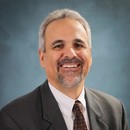Nine school districts in Kern County, Calif., are participating in a pilot project designed to keep kids on the path to success, from kindergarten to career.
The Kern Integrated Data System will securely gather existing data streams, analyze that data and present it in dashboards to help educators and administrators ensure all students reach their full potential.
The first phase of the nine-district pilot rolled out in June, with three more phases coming by year’s end. The districts in the pilot range from Kern High School District’s 40,000 students to Buttonwillow Union School District’s 300 students.
“To ensure the pilot project represented districts of varying size and student demographics, we were intentional about which districts were invited to participate in the pilot, because it needed to be representative of schools throughout the county,” says Christian Shannon, administrator of support services for the Kern County Superintendent of Schools.
The data collected falls into four categories: “Essentials” covers the data required to meet accountability requirements set by local, state and federal authorities; “Early Warning” uses predictive analytics to identify students at risk and help them get the interventions they need to stay on course; “Student Success” uses machine learning techniques to help students persist and reach their full potential; and “Operations” helps school districts manage finances, staff operations and reporting.
The security of student data is paramount, says KCSOS Executive Director of Technology Anthony Davis. While KCSOS KIDS staff will deal primarily with aggregated data, individual districts will have the same access they are accustomed to with their student information systems, and they’ll be able to sign in to the platform using their existing user authentication systems, which differ from district to district.
KIDS has been a unifying force for the school districts of Kern County. “Districts have felt a lot of frustration with being isolated,” says Roger Sanchez, director of research and planning for Kern High School District. “We’re almost becoming a virtual unified district in the county. There’s so much excitement behind it.”
MORE FROM EDTECH: Check out how K–12 schools can make the most of their data analytics programs.
EDTECH: Where did the idea for this initiative come from?
Shannon: In January of 2018, Dr. Mary Barlow, Kern’s superintendent, shared her vision for countywide data warehouse/analytics solutions that would help districts close the achievement gap by informing current instructional practices, implementing targeted instructional strategies, provide warning signals where student interventions might be needed, illuminate bright spots that might be investigated and replicated, and activate professional development needs for teachers, administrators and other instructional support staff across Kern County.
EDTECH: You rolled out the pilot across nine of your 47 school districts in June. What does the team look like?
Shannon: KCSOS has a nine-member KIDS Support Team composed of staff from IT and Instructional Services. They have been responsible for driving the KIDS initiative within KCSOS and in support of the pilot districts.
We asked the nine pilot districts to identify a data warehouse champion within their district — we call them KIDS ambassadors — and asked each of them to start building out district teams that will be responsible for training and supporting their district staff with KIDS. Roger Sanchez is the ambassador for the Kern High School District.
Sanchez: With over 40,000 students in our district, we have dedicated directors who focus on different aspects of the education world.
We gathered a team of those experts in the room, and as this process has been rolling out — because we’re really in its infancy right now — we’ve been getting their input as to how we’re going to proceed into the future.
We don’t want to do another initiative just for its own sake. We want to make sure that this has some teeth in it and longevity in it.
MORE FROM EDTECH: Find out more about how K–12 leaders can turn a digital implementation program into a true success.
EDTECH: How did you make decisions about who would be in the pilot?
Shannon: Since the pilot project allows us to assess our internal structure of support and Hoonuit’s ability to meet the unique needs of the districts we serve, we wanted to ensure the pilot districts represented the diversity of size, demographics, metropolitan and rural characteristics that are representative of districts throughout our county.
We are learning important lessons inside the pilot that will prove valuable as we endeavor on board the additional 38 districts countywide.
EDTECH: What technology did you need to make this a reality?
Davis: When we were evaluating potential data warehouse solution providers, we focused on hosting the solution onsite, or using a cloud provider. We looked at cost and supporting the system, and we analyzed security and access.
We decided to host it in a KCSOS-owned Azure environment, and we’ve contracted with Hoonuit to build and maintain the servers as well as install all of their analytics tools and software.
That decision provided KIDS a consistent hosting platform by leveraging Microsoft’s staff, servers and systems.
A huge component of choosing the Azure system was its security sophistication. We wanted to ensure that each participating pilot district has its own secure connection.
MORE FROM EDTECH: See how hyperconvergence is becoming the mainstream for K–12 data center configurations.
EDTECH: Where do you expect to be a year from now?
Sanchez: We’re really excited about the prospect of having access to information about our students before we get them.
Preanalytics, or looking at snapshots of students’ performances over time, will allow us to better place students in the appropriate classes when they enter high school.
As a high school district, we don’t have them for very long. Addressing the students’ needs quickly is of paramount importance, and we know that freshman year is crucial in the life of a high school student.
Davis: My hope is that a year from now, we’ll be surprised by the things we didn’t realize before we had this level of access to the data.
That may be bright spots, where we say, “Wow, look how awesome this teacher is doing. What are they doing so well that their students are succeeding?” And then opportunities, where we say, “Okay, why does this group have challenges in this specific area? What can we do to remedy that?”












